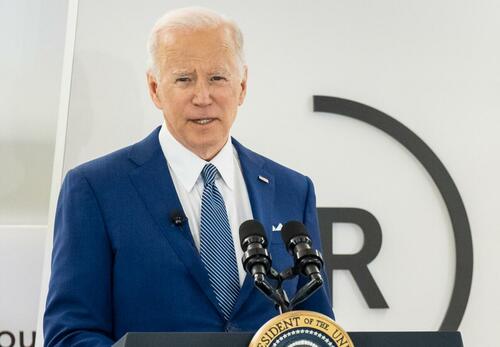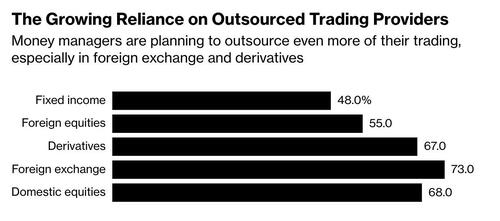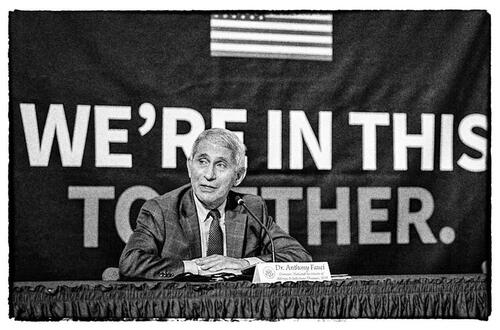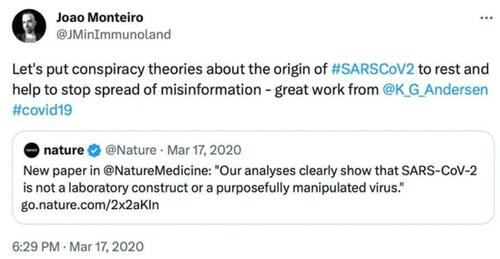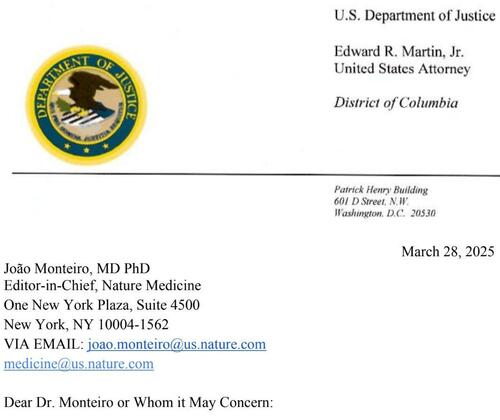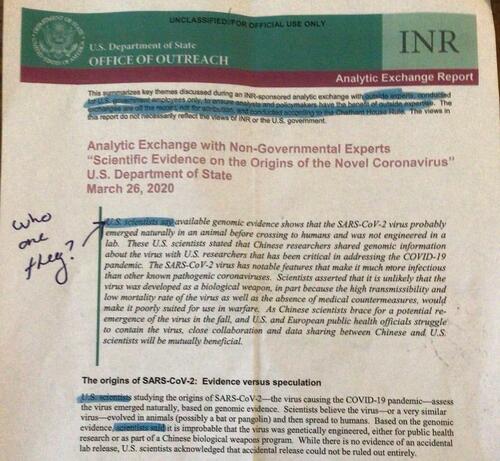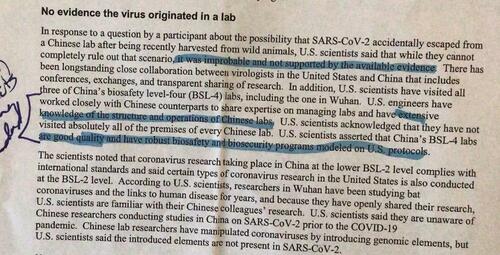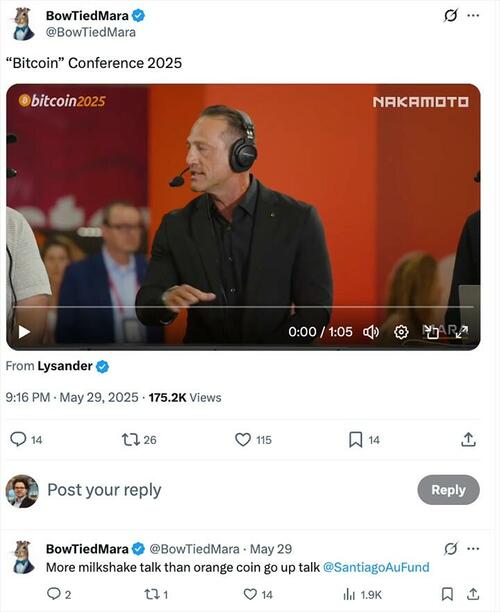One can readily admit that the Magisterium's manner of expression does not seem very easy to understand at times. It needs to be translated by preachers and catechists into a language which relates to people and to their respective cultural environments. The essential content of the Church's teaching, however, must be upheld in this process. It must not be watered down on allegedly pastoral grounds, because it communicates the revealed truth.
Distinction Matter - Subscribed Feeds
-
Site: PaulCraigRoberts.org
Do the Democrats Have Insurrection Underway in America ?
PCR with Nima on Dialogue Works
https://x.com/Dialogue_NRA/status/1932460907088826407?s=19
This interview was taken down by YouTube as soon as it was posted, which proves the point that serious issues cannot be acknowledged and discussed. Just as official narratives prevailed over reality in the Biden, Obama, and Bush regimes, official narratives continue to prevail. Print, TV, and social media continue to censor.
-
Site: PaulCraigRoberts.org
Who’s behind LA’s Anti-ICE Riots?
https://sputnikglobe.com/20250609/whos-behind-la-anti-ice-riots-1122221077.html
-
Site: PaulCraigRoberts.org
How to Recover from the Covid vax
If you took the Covid vaccination and have experienced health consequences, here is what you can do:
Dr. William Makis reports daily on his website his successes in curing stage 4 cancer with Ivermectin and Fenbendazole:
Dr Russell Blaylock reports in his monthly Wellness Report (worth taking for $50 annually) that the spike protein introduced into the body by the “Covid vax” is destroyed by a dose of nattokinase, 2,000 FU twice a day taken on an empty stomach. Nano-curcumin detaches the spike protein from the blood vessel wall. Add a dose of zinc 50mg twice a week for 3 weeks, then once a week thereafter.
-
Site: Mises InstituteI became interested in the question of whether a true market in healthcare can work. I think it is a fantastically interesting subject. It has been the focus of my PhD work.
-
Site: Mises InstituteWe can run society according to the rules of private property and freedom, or we can run it by bureaucratic decree, and the covid episode reminded us of just how important that choice is.
-
Site: Mises InstituteIt’s the master of public health awardees who are running public health. An MPH is a two-year degree which does not require you to have any prior training in health, in biology, or in medicine. It’s primarily focused on the use of big data and statistical analysis.
-
Site: Mises InstituteBishop sees in the rise of the Republican Party, culminating in Lincoln’s election, the beginning of a Marxist revolution.
-
Site: Zero HedgeUS, China "Agree In Principle On Framework For Implementing Geneva Consensus"Tyler Durden Wed, 06/11/2025 - 06:55
After a full second day of discussion on the US-China trade deal, we finally have... something.
As Bloomberg reports, just before midnight London time, Commerce Secretary Howard Lutnick and China’s Vice Commerce Minister Li Chenggang both said they have agreed in principle on "a framework for implementing the Geneva consensus" combined with the outcome of the leaders June 5th call.
“Once the presidents approve it, we will then seek to implement it,” Lutnick added.
If it sounds confusing, it is: the parties said they will implement a framework which was already agreed upon weeks ago... so what exactly were the talks for? Shouldn't there have been at least some token progress beyond what was already agreed upon, hence "consensus."
Lutnick adding that “We absolutely expect that the topic of rare earth minerals and magnets… will be resolved in this framework implementation," does not make it any clearer if there is any actual deal on rare earths and/or chips... or just an agreement to continue talks?
Lutnick continued: “Also, there were a number of measures the US put on when those rare earths were not coming… You should expect those to come off — sort of, as President Trump said, in a balanced way. When they approve the licenses, then you should expect that our export implementation will come down as well” which suggests that nothing has been resolved at this stage, and instead we just wait for China to start exporting rare earth minerals?
And yes, for all the pomp and circumstance, it appears that all that took place in the past 48 hours was some meetings over coffee and KFC, because as Lutnick also said, the "framework is a first step, we had to get the negativity out."
Well, the negativity may be out, but no actual deals or agreements are in; instead agreement was reached to implement the implementation of an already agreed upon consensus.
Finally, the Commerce secretary said that the idea behind the framework is to increase trade with China, which is great but wasn't the whole point of the negotiation to rebalance trade, not merely increase it? After all, it's very easy to receive even more Chinese exports and "increase trade."
Meanwhile, US Trade Representative Jamieson Greer said there were no other meetings scheduled, but added that the American and Chinese sides talk frequently and are able to do so whenever they need.
US-China trade talks wrapped up in London just before midnight.
— annmarie hordern (@annmarie) June 10, 2025
“We have reached a framework to implement the Geneva consensus,” Commerce Secretary Howard Lutnick tells us.
“Once the presidents approve it, we will then seek to implement it.” pic.twitter.com/eMu3xRb4y6On the news, gold fell through 3320 but promptly rebounded as the market realized that what the announcement effectively boils down to is that the two sides have agreed to speak more.
Spoos were trading at 6,040, before jerking higher, lower, and at last check trading unchanged from where they closed the regular session.
In FX, cross-JPY buying morphed into broad USD selling with cross-JPY not really gaining traction; USDJPY is back under 145 after rising to a high of 145.10.
-
Site: Zero Hedge"Temporary Disruptions": Cyberattack On Whole Foods Supplier Sparks Store ShortagesTyler Durden Wed, 06/11/2025 - 06:55
North American grocery wholesaler United Natural Foods (UNFI), the primary distributor for Whole Foods Market, has been hit by a cyberattack that temporarily paralyzed U.S. operations. The company is working to restore systems by the weekend. The disruption has already led to reports of empty shelves at some Whole Foods locations due to delayed shipments.
Last Thursday, UNFI revealed in a filing with the U.S. Securities and Exchange Commission that it "activated its incident response plan and implemented containment measures, including proactively taking certain systems offline," after uncovering unauthorized network activity on its systems.
"The incident has caused, and is expected to continue to cause, temporary disruptions to the Company's business operations," the Form 8-K continued, adding, "The Company is working actively to assess, mitigate, and remediate the incident with the assistance of third-party cybersecurity professionals and has notified law enforcement."
Fast forward to Monday, UNFI told customers in an email obtained by Bloomberg that it was "working toward the goal of returning to full operational capacity by Sunday or sooner," while apologizing for the disruption.
What's happened so far (via Bloomberg):
-
Operations Halted: UNFI shut down all business systems, including ordering and shipping, after detecting intruders in its network.
-
Customer Impact: Forklift operators were sent home, and some resumed work using pen-and-paper systems. Clients like National Co+op Grocers made special requests to keep top-selling products moving.
-
Response: UNFI is working with cybersecurity firm CrowdStrike and has reported the incident to the FBI. CEO Sandy Douglas said the situation is being handled by "a strong team of experts."
-
No Payroll Disruptions Expected.
-
Whole Foods: Confirmed supply disruptions; shelves in some Manhattan stores were visibly empty.
UNFI CEO Sandy Douglas informed investors during a Tuesday earnings call that intruders had compromised its IT systems, and backend systems related to the supply chain were down.
"We believe we are managing the incident capably with a very strong team of inside and outside professionals, including specialized experts," Douglas said, adding, "We will continue to keep our customers, suppliers and associates regularly updated on our progress and next steps."
Bloomberg reported that at least one Whole Foods location in Manhattan had partially empty shelves as a result of the disruption.
X users report disruptions...
At Whole Foods just now. Lotsa shelves empty
— Julie Chang (@JulieChangRE) June 10, 2025
I asked what’s going on. One of the largest food distributors in the US got cyberattacked
That’s umm troubling the food supply can be disrupted this way pic.twitter.com/GG9UsftcI4Tech blog BleepingComputer noted about the increasing cyber threats targeting America's food supply chain:
UNFI is just the latest company in the food industry to have been breached in recent years. For instance, in March, Walmart-owned warehouse supermarket chain Sam's Club disclosed it was investigating claims of a Clop ransomware breach. Food giant JBS Foods, the world's largest beef producer, also paid an $11 million ransom in 2021 after a REvil ransomware attack forced it to shut down production at multiple sites worldwide.
The key takeaway: UNFI's cyberattack underscores the fragility of the U.S. just-in-time supply chain and its heavy reliance on vulnerable IT infrastructure.
Our view—well known to readers—is clear: Take control of your food supply. Whether that means planting a garden, raising chickens, or building direct relationships with local ranchers and farmers, the message is the same: stop relying on globalist multinational corporations.
-
-
Site: Catholic ConclaveNow Pope Francis is dead, all protection goneStatement of the Czech Province of the Society of Jesus on the Aletti CenterTuesday, 10.6.2025Olomouc. After considering the situation surrounding the Olomouc Aletti Center, the leadership of the Czech Province of the Society of Jesus decided to take several measures in response to doctrinally questionable texts originating from this environment, to Catholic Conclavehttp://www.blogger.com/profile/06227218883606585321noreply@blogger.com0
-
Site: Mises InstituteGovernments at all levels play the same game—always threatening to eliminate school buses, police departments, ambulances, garbage collection—whatever can succeed in bringing the voters or appropriation committee members to their senses and increasing taxes and spending.
-
Site: Zero HedgeEnergy Winners Should Be Chosen By Consumers, Not GovernmentTyler Durden Wed, 06/11/2025 - 06:30
Authored by Gary Abernathy via The Empowerment Alliance,
The “One Big Beautiful Bill” – designed to put most of President Trump’s campaign promises into action – squeaked through the House of Representatives on May 22 and was immediately greeted by expressions of horror from activists and corporations invested in so-called “alternative” energy.
The big business interests that drive the solar and wind boom have for years operated at a huge advantage. Most startups historically identify a need and create a quality product or service to meet the demand in the hope of becoming profitable within a few years. By contrast, the “renewables” industry has had the backing of the United States government in the form of tax incentives designed to virtually guarantee success. Even with so much government largesse, it’s astounding how many solar companies have been so badly managed that they have gone out of business.
Still, with Uncle Sam cheering them on, solar companies have converted more than a million acres of cropland and pastures to unsightly collections of solar panels. The rapid deployment often stirred controversy, pitted neighbor against neighbor, and sent state lawmakers scurrying to craft new and evolving rules and regulations.
Many people viewed the encroachment of solar as a blight on generational farmland, as ugly glass and metal panels replaced corn, soybean, wheat and other crops. Some landowners, though, eagerly grabbed the lifeline offered by solar companies in the form of per-acre sale or lease prices that were far above average market values, in many cases allowing them to escape mountains of farming debt.
As I wrote in a Washington Post column a few short years ago about a public hearing I attended on the topic of solar developments in southern Ohio, “The testimony was sometimes heart-wrenching. Some members of multigenerational farm families who have made deals with the solar companies spoke with tears in their eyes. Farming is in their blood, and in a perfect world they would continue the family tradition. But for them, it’s been a long time since the world was perfect.”
The kicker, of course, is that solar companies were able to offer such lucrative deals almost entirely because of subsidies and tax incentives offered by the Obama administration, curtailed somewhat by the first Trump administration, but reinvigorated on steroids by the Biden administration’s misleadingly named Inflation Reduction Act.
In a follow-up Post column in 2021, I noted that suspicions about the solar installations were increasing. “Questions are growing about neighboring property values and environmental issues,” I wrote. “What about responsible land practices such as plant maintenance, erosion protection and water runoff? When the solar fields are dismantled someday, will the soil be safe for reuse? Solar companies are providing answers, but trust is not always evident.”
For solar, the return of Trump and GOP congressional control means the gravy train might be rolling to a stop. The budget passed by the House ended many tax credits for companies installing rooftop solar panels, but, more importantly, the bill “also ends the investment and electricity production credits for clean energy facilities that begin construction 60 days after the legislation is enacted or enter service after Dec. 31, 2028. Those credits have played a key role in the rapid expansion of utility-scale solar projects in the U.S.,” as CNBC reported. Solar stocks immediately plunged.
But political considerations are always in play, and it’s telling that the House budget bill “left the manufacturing tax credit relatively unscathed.” That’s almost certainly because of the fact that domestic solar component manufacturing is well underway, including in many red states where members of Congress aren’t anxious to pull the plug on jobs that benefit local communities – even if they are based on the artificial tax subsidies from a government picking winners and losers.
When it comes to energy, the House bill will likely see some revisions in the Senate. Sen. Thom Tillis (R-N.C.) was probably smart, politically, when he said he would push for a slower phase-out of clean energy subsidies.
“For companies that have made major capital deployment decisions, we need to respect that or people are going to start thinking that the United States has massive changes in policy every two years in this space, and that will be devastating to the U.S.’s current position as the innovation leader,” Tillis said.
As Doc Holliday said in the movie “Tombstone,” that’s the damnable misery of it. Subsidies have backed the manufacture of solar initiatives in state after state, so while there are endless unknowns about the future, jobs are here now, at least in the short term. Abruptly shutting them down would give Democrats an election issue that a slow phaseout might help to avoid, or at least alleviate.
An “all-of-the-above” approach to energy is a popular political slogan, and indeed, alternatives will continue to be part of our energy mix. But recent blackouts, brownouts and general grid failures around the world due to an overreliance on solar demonstrate that the various resources that make up “all of the above” are not created equal. They do not generate equal energy, or give consumers the same dollar-for-dollar value.
The success of “alternatives” should be based on merit. Are they affordable? Are they effective? Are they reliable? Are they in demand? Our system of capitalism decides winners and losers. When government bureaucrats try to make those calls, taxpayers end up footing inflated bills for inferior products. That outcome should be an alternative no one supports.
Gary Abernathy is a longtime newspaper editor, reporter and columnist. He was a contributing columnist for the Washington Post from 2017-2023 and a frequent guest analyst across numerous media platforms. He is a contributing columnist for The Empowerment Alliance, which advocates for realistic approaches to energy consumption and environmental conservation. Abernathy’s “TEA Takes” column will be published every Wednesday and delivered to your inbox!
-
Site: Voice of the Family
As Pope Leo XIV enters the firing line of the homosexual lobby following his re-statement of Catholic teaching on marriage, it’s the painful duty of Catholics respectfully to resist Bishop Terence Drainey, who continues to advance the LGBT+ agenda in his diocese of Middlesbrough, UK, and all bishops who subvert Catholic teaching. The Diocese of Middlesbrough LGBT+ Ministry was established, ostensibly, […]
The post Catholics must respectfully resist Bishop Drainey’s promotion of the LGBT+ agenda appeared first on Voice of the Family.
-
Site: Voice of the Family
Extract of Christian Fashion in the History of the Church by Virginia Coda-Nunziante (Calx Mariae Publishing, 2022). Letter to those responsible for Catholic associations and education, 12 June 1960 This year, the first signs of our late-arriving spring showed a certain increase in the use of men’s dress by girls and women; even by mothers […]
The post Concerning men’s dress worn by women appeared first on Voice of the Family.
-
Site: Voice of the Family
From Divine Intimacy Presence of God “I return thanks to You, O God, one and true Trinity, one sovereign divinity, holy and indivisible unity. ” (Roman Brieviary) 1 From Advent until Trinity Sunday, the Church has had us consider the magnificent manifestations of God’s mercy toward men: the Incarnation, the Redemption, Pentecost. Now she directs […]
The post The Source of Mercy: on the feat of the most Holy Trinity appeared first on Voice of the Family.
-
Site: Mises InstituteThe federal bureaucracy has been called a “headless fourth branch of government.” So long as this unchecked army of bureaucrats, technocrats, and deep-state operatives is allowed free rein, it will be impossible to make progress in limiting the state’s power over individuals.
-
Site: OnePeterFive

Above: Allegory of the Holy Eucharist by Miguel Cabrera (1750). From the Roman Office. ℣. Grant, Lord, a blessing. Benediction. May the Gospel’s holy lection Be our safety and protection. ℟. Amen. Reading 1 Continuation of the Holy Gospel according to John John 6:44-52 At that time, Jesus said unto the multitudes of the Jews: No man can come to Me, except the Father…
-
Site: Real Investment Advice
On May 20th, Google CEO Sundar Pichai updated the public on the company’s progress on its AI development as follows: We are now processing 480 trillion monthly tokens, a nearly 50X increase in just one. Over 7 million developers are […]
The post The Google AI Buildout In Plain English appeared first on RIA.
-
Site: PeakProsperityJoin Chris and Evie for the Signal Hour live at 1pm ET.
-
Site: Real Investment Advice
By falling significantly short of its intended savings goals, the DOGE program underscores the substantial challenges that hinder efforts to reduce federal spending and cut the deficit. Furthermore, its failure suggests that a more expedient way to reduce the deficit […]
The post Deficits And The Tradeoffs Required To Fix Them appeared first on RIA.
-
Site: Zero HedgeJefferies Goes On Hiring Binge As Outsourced Trading BoomsTyler Durden Wed, 06/11/2025 - 05:45
Jefferies Financial Group is ramping up its outsourced trading business by hiring 17 new traders, aiming to tap into the growing trend of asset managers looking to cut costs and expand their trading capabilities, according to Bloomberg.
The firm has already recruited nine traders and plans to hire eight more, extending its services to fixed-income products in addition to its existing equities desk.
This expansion comes as more asset managers consider outsourcing their trading operations. UBS’s exit from the outsourced trading business earlier this year has opened opportunities for competitors to gain market share. “A main theme has been the increase in the larger asset managers looking at this,” said Amy Thorne at Northern Trust. “This is not just a cost play.”
Outsourced trading allows money managers to execute trades during busy periods, access new markets, or even replace their entire trading divisions. Advocates say it provides better pricing and access to major counterparties, while critics worry it could erode market knowledge and relationships.
Jesse Forster at Crisil Coalition Greenwich said, “The buy-side’s doing more with less these days. So those hesitancies are wearing away, but there is still an element of: ‘Hey, I’m giving up a little bit of control. Is my boss going to like them better than me? Are they going to do too good of a job?’”
Bloomberg writes that to address potential conflicts, Jefferies stresses that its outsourced traders operate independently. “The information barriers we have in place ensure full segregation of order flow,” said Dean Gray, Jefferies’ head of international outsourced trading.
Other firms are also entering the market. Clear Street has hired six traders so far, with plans to grow to 20 within 18 months. Cantor Fitzgerald is expanding its offering to crypto, while Northern Trust and Marex Group are scaling up globally. “They don’t have to build their own infrastructure and capability, that’s what these firms are plugging into,” said Jack Seibald at Marex.
Data from a 2024 State Street survey shows nearly three-quarters of institutional investors plan to use outsourced trading for foreign exchange, and 67% plan to use it for derivatives.
Rebecca Crowe at Bank of New York Mellon said, “Eventually the drive for returns and client outcomes has to win.”
-
Site: Catholic ConclavePurchase the book hereCatholic Conclavehttp://www.blogger.com/profile/06227218883606585321noreply@blogger.com0
-
Site: LES FEMMES - THE TRUTH
-
Site: Crisis Magazine

This year, 2025, marks 1,250 years of the German region of Westphalia, the place where a celebrated treaty was signed in 1648 which laid the legal foundations of the modern nation state. Ours is now an age of globalists, however, at least on the EU-governed continent of mainland Europe, where, at the behest of the little people’s political “betters,” all expressions of traditional national and…
-
Site: Crisis Magazine

Not long ago, a bright and thoughtful young woman opened up during a retreat small group. She shared that she had recently come to view her upbringing as “traumatic.” Gently, the group leader asked her to elaborate. The young woman hesitated, then she offered: “Well…my dad was strict. He didn’t really validate my emotions. He focused on my behavior not my heart. He expected a lot—too much…
-
Site: Zero HedgeGun Used In Shooting Colombian Presidential Candidate Traced To ArizonaTyler Durden Wed, 06/11/2025 - 05:00
Authored by Yeny Sora Robles via The Epoch Times (emphasis ours),
The pistol used to shoot Colombian presidential candidate Sen. Miguel Uribe Turbay was purchased in the U.S. state of Arizona, the South American country’s top police officer said Monday.
 Forensic experts work at the crime scene where Senator Miguel Uribe Turbay was shot and wounded in the Modelia neighborhood in Bogota on June 7, 2025. Raul Arboleda/AFP via Getty Images
Forensic experts work at the crime scene where Senator Miguel Uribe Turbay was shot and wounded in the Modelia neighborhood in Bogota on June 7, 2025. Raul Arboleda/AFP via Getty Images
Speaking at a press event, Gen. Carlos Fernando Triana of the Colombian National Police said, “According to the verification carried out by the U.S. Bureau of Alcohol, Tobacco, Firearms and Explosives, within the framework of international cooperation, the firearm was purchased on August 6, 2020, in Arizona, United States, that is, it was purchased legally.”
Monday’s media event follows Uribe’s being shot twice at close range in the head and once in the leg during a pre-campaign event in the Modelia neighborhood of Bogotá on Saturday. Uribe, 39, who is of the conservative Centro Democrático party, remains hospitalized in critical condition.
El momento en que el disparan contra @MiguelUribeT, senador, precandidato presidencial y nieto del expresidente Julio César Turbay, durante un mitin en Bogotá https://t.co/dVWNPngstZ
— Pascal (@beltrandelrio) June 7, 2025Triana further told the media that the Colombian Attorney General’s Office is investigating the shooting with the assistance of the country’s army and international cooperation to investigate how the weapon entered the country.
Luz Adriana Camargo Garzón, attorney general of Colombia, told the media event that investigators are also trying to identify whether the firearm used against Uribe has been involved in other similar attacks.
The alleged shooter, a 15-year-old boy from a poor neighborhood in Bogotá, was shot in the leg by police as he attempted to flee the scene and was captured.
The motive behind the attack remains unclear.
Condition Is ‘Extremely Serious’
The Santa Fe Foundation clinic, which is treating Uribe, issued a statement about his condition early on Monday.
“After completing the neurosurgical and left thigh procedures, he was transferred to intensive care for postoperative stabilization. His condition is extremely serious, and the prognosis is reserved,” the foundation stated on Monday.
His wife, Maria Claudia Tarazona, sent a message asking people to pray for him.
“Miguel is currently fighting for his life. Let us ask God to guide the hands of the doctors who are treating him. I ask everyone to join us in a chain of prayer for Miguel’s life. I put my faith in God,” she said in a post on X.
Uribe is the son of journalist Diana Turbay, who was kidnapped by Pablo Escobar’s Medellín cartel and killed during a botched rescue operation in 1991. He is also the grandson of former President Julio César Turbay, who served as the country’s leader from 1978 to 1982. Uribe was a councilman in Bogotá, secretary of government in Enrique Peñalosa’s mayoral office, and, since 2022, has held a seat in the Senate for the Democratic Center.
-
Site: Mises InstituteWhat the “legacy” media is trying to present as a brand-new authoritarian crackdown on the press is only a more visible version of how the federal government has attempted to control public opinion for nearly a century.
-
Site: Mises InstituteBob hosts economists Vincent Geloso and Chandler Reilly to discuss their new paper, which applies Rothbard's "Private Product Remaining" to rethink how national output is measured.
-
Site: Zero HedgeUK Announces $19.3 Billion Funding For New Nuclear Power ProjectTyler Durden Wed, 06/11/2025 - 03:30
Weeks after Germany decided to reverse course and 're-embrace' nuclear power following their supreme idiocy on the matter, the UK government announced on Tuesday that it would invest 14.2 billion pounds (US$19.3 billion) to build a new nuclear plant in the southeast of England.
 Sizewell B nuclear power station, in Sizewell, England, on Sept. 1, 2022. Chris Radburn/AFP via Getty Images
Sizewell B nuclear power station, in Sizewell, England, on Sept. 1, 2022. Chris Radburn/AFP via Getty Images
The move was revealed by the Department for Energy Security and Net Zero as part of its broader spending review, which will lay out priorities for the next four years.
The new plant, named Sizewell C, will be located in Suffolk county, and is predicted to create around 10,000 jobs during construction, according to a government statement. Once operational, it will create enough electricity power roughly 6 million homes.
"We need new nuclear to deliver a golden age of clean energy abundance, because that is the only way to protect family finances, take back control of our energy, and tackle the climate crisis," said Energy Minister Ed Miliband. "This is the government’s clean energy mission in action, investing in lower bills and good jobs for energy security."
As the Epoch Times notes further, the UK has also been tapping up new investors to fund the construction of Sizewell C, but no new partners were mentioned in the announcement.
Neither the total cost of construction nor a date for expected completion has been announced.
Sizewell C was originally an EDF Energy project but is now majority-owned by the British government, with EDF Energy a minority shareholder.
EDF Energy is the British arm of Électricité de France (EDF), which is wholly owned by the French state.
The UK government’s stake was 83.8 percent and EDF’s stake was 16.2 percent at the end of December, EDF’s financial results showed in February.
Sizewell C would be just the second new nuclear plant built in Britain in more than 20 years, after another EDF project, Hinkley Point C, which was first announced in 2010.
Hinkley Point C, based in Somerset, southwest England, has been beleaguered by delays and budget overruns and is currently expected to come online in 2029.
Sizewell C would be the third power station built on the site after Sizewell A and Sizewell B, both of which are currently in the process of being decommissioned.
The Department for Energy Security and Net Zero also announced that it had picked Rolls-Royce SMR to build Britain’s first small modular reactors (SMRs).
About 2.5 billion pounds ($3.4 billion) of government funds will be dedicated to the SMR program over the next four years, in a bid to get one of Europe’s first small-scale nuclear industries going.
SMRs are usually around the size of two football fields and composed of parts that can be assembled in a factory, making them quicker and cheaper to build than conventional plants.
The moves by Britain come amid a renewed interest in nuclear power across Europe, sparked by spiraling energy costs due to the ongoing war between Russia and Ukraine, which is hampering the continent’s supply of natural gas.
European Commission President Ursula von der Leyen said in a keynote speech in August 2024 that the European Union needed more nuclear power.
-
Site: AsiaNews.itToday's news: the Indian state of Karnataka to redo its caste census;Defence spending in Pakistan to increase by 17%; Myanmar's minescontaminating Thai rivers; Russia recruits foreigners for war through deception;Members of world famous K-pop band BTS completecompulsory military service in South Korea.
-
Site: AsiaNews.itA seminar organised recently by the European Union delegation and the Tajik government brought together politicians, law enforcement specialists and representatives of civil society to exchange knowledge and strengthen cooperation in response to the growing threat of violent acts motivated by extremism.
-
Site: Mises InstituteProtectionism really isn‘t a theory of betterment for all but a claim that certain people in certain occupations are special. They must be paid more handsomely than the market—meaning you and me—wishes to pay. It will be big business and big labor who will be the beneficiaries of tariffs.
-
Site: Zero HedgeForeign Meddling: US Ambassador Lobbies Israeli Ultra-Orthodox Against Forcing New ElectionsTyler Durden Wed, 06/11/2025 - 02:45
As Israeli Prime Minister Benjamin Netanyahu's ruling government coalition stands on the brink of being toppled by a bill that would dissolve the country's parliament and force new elections, US ambassador to Israel Mike Huckabee has controversially inserted himself into the country's domestic affairs by lobbying ultra-Orthodox members of Netanyahu's coalition -- urging them to rethink their plans to vote in favor of the measure.
The rebellion by the ultra-Orthodox parties springs from their anger over the prospect of ultra-Orthodox youth being included in the country's military draft -- after having been exempt from conscription since Israel's 1948 founding. Last summer, Israel's Supreme Court ruled that the government must start drafting the Haredi men, who typically dedicate their entire lives to religious study. Since then, the ultra-Orthodox have been pushing hard for the Knesset to pass legislation to render the Supreme Court decision on the subject moot. With the IDF poised to conscript 54,000 Haredi yeshiva students in July, the parties have been boycotting various votes and are now poised to tip the scales in favor of new elections.
 US Ambassador to Israel Mike Huckabee (ACLJ graphic)
US Ambassador to Israel Mike Huckabee (ACLJ graphic)
According to polling, Netanyahu would be thrown to the curb in a new election. Enter Huckabee. The former Arkansas governor and fervent Evangelical Christian Zionist has been meeting with senior Haredi politicians, imploring them to give Netanyahu more time to solve the draft crisis. His pitches reportedly include a caution that “government stability is important for dealing with the Iranian issue.” (Pursuing a resolution of tensions over Iran's nuclear program, Trump administration diplomats will have a sixth round of talks with Iranian counterparts on Sunday in Oman's capital, Muscat.) Another report has Huckabee telling ultra-Orthodox leaders that "Washington will have difficulty supporting Israel during an election period," though it isn't clear what means, exactly.
As you might expect, Huckabee's intervention isn't appreciated by opposition members working to trigger new elections. Opposition Leader Yair Lapid diplomatically said he hoped the reports were untrue:
“Since I have no doubt that Ambassador Huckabee respects Israel’s independence and its democracy, I hope and believe that the report that he is interfering in Israel’s internal politics and trying to help Netanyahu [deal with] the ultra-Orthodox in the military draft law crisis are not true. Israel is not a protectorate.”
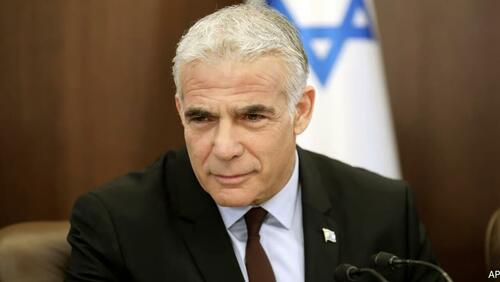 Yair Lapid, leader of the centrist opposition Yesh Atid party and prime minister for six months in 2022, said Huckabee would be wrong to interfere in Israel's internal politics (AP photo)
Yair Lapid, leader of the centrist opposition Yesh Atid party and prime minister for six months in 2022, said Huckabee would be wrong to interfere in Israel's internal politics (AP photo)
So far, Huckabee has been tight-lipped about his machinations. “He is holding meetings with various Israeli figures. The content of those conversations remains private,” a Huckabee spokesperson told Channel 13. The outlet reported that Netanyahu is aware of Huckabee's lobbying and is pleased about it. Huckabee has long been aligned with right-wing, expansionist elements in Israel. “I consider [the two-state solution] no solution whatsoever,” he told a Republican Jewish Coalition audience in 2015, insisting that Israel has a "God-given...title deed" to all the land it controls -- including the West Bank -- or, as he insists on calling it, "Judea and Samaria."
Mike Huckabee, after being named Ambassador to Israel by Trump, declares "there is no occupation" of Palestinian territory by Israel. Rather, Israel has had the "rightful deed" to the territory since the days of Abraham. He says he'll be using Biblical terms like "Promised Land" pic.twitter.com/hRjlMpwcBM
— Michael Tracey (@mtracey) November 16, 2024The measure to dissolve the parliament was introduced last week by Israel's largest opposition party. There are 120 seats in the Knesset, and Netanyahu's coalition controls 68 of them. Of his coalition, 18 come from Israel's two main ultra-Orthodox parties, which means their defection would guarantee the dissolution of the Knesset and a new round of elections. Last week, two spiritual leaders of a faction of the ultra-Orthodox United Torah Judaism Party instructed members to move forward with an attempt to topple Netanyahu's government over the draft issue.
Netanyahu has been also been making the rounds with ultra-Orthodox Knesset members. On Monday, Israel's Channel 12 quoted Netanyahu as telling Haredi lawmakers, “We are in a dramatic period. There are extraordinary challenges on the table. This is a historic window of opportunity that will not return, and therefore, under no circumstances should the foundations of the government be shaken.”
-
Site: Zero HedgeRussia's Arrival In Dnipropetrovsk Puts Ukraine In A DilemmaTyler Durden Wed, 06/11/2025 - 02:00
Authored by Andrew Korybko via Substack,
It’s very difficult to imagine how Ukraine can prevent any further Russian advances after this...
The Russian Ministry of Defense announced on Sunday that their forces had entered Ukraine’s Dnipropetrovsk Region, which Kremlin spokesman Dmitry Peskov confirmed is part of Putin’s buffer zone plan. This was foreseen as early as late August once the Battle of Pokrovsk began but has been achieved even without capturing that strategic fortress town. Russian forces simply went around it after breaking through the southern Donbass front. This development puts Ukraine in a dilemma.
It’ll now have to simultaneously fortify the Dnipropetrovsk front together with the southern Kharkov and northern Zaporozhye ones in case Russia uses its new position to launch offensives into any of those three. This could put serious strain on the Ukrainian Armed Forces as they’re already struggling to prevent a major breakthrough in Sumy Region from Kursk. Coupled with depleting manpower and questions about continued US military-intelligence aid, this might be enough to collapse the frontlines.
To be sure, that scenario has been bandied about many times over the past more than 1,200 days, but it nowadays appears tantalizingly closer than ever. Observers also shouldn’t forget that Putin told Trump that he’ll respond to Ukraine’s strategic drone strikes earlier this month, which could combine with the abovementioned two factors to achieve this long-desired breakthrough. Of course, it might just be a symbolic demonstration of force, but it could also be something more significant as well.
Ukraine’s best chances of preventing this are for the US to either get Russia to agree to freeze the frontlines or to go on another offensive.
The first possibility could be advanced by the carrot-and-stick approach of proposing a better resource-centric strategic partnership than has already been offered in exchange on pain of imposing crippling secondary sanctions on its energy clients (specifically China and India with likely waivers for the EU) and/or doubling down on military-intelligence aid if it still refuses.
As for the second, the 120,000 troops that Ukraine has assembled along the Belarusian border according to President Alexander Lukashenko last summer could either cross that frontier and/or one of Russia’s internationally recognized frontiers. Objectively speaking, however, both possibilities only stand a slim chance of success: Russia has made it clear that it must achieve more of its goals in the conflict before agreeing to any ceasefire while its success in pushing Ukraine out of Kursk bodes ill for other invasions.
The likelihood of Ukraine cutting its losses by agreeing to more of Russia’s demands for peace is nil. Therefore, it might inevitably opt, whether in lieu of the aforesaid scenarios or in parallel with one or both of them, to intensify its “unconventional operations” against Russia. This refers to assassinations, strategic drone strikes, and terrorism. All that will do, however, is provoke more (probably outsized) conventional retaliation from Russia and thus painfully delay Ukraine’s seemingly inevitable defeat.
With an eye towards the endgame, it appears as though an inflection point is about to be reached or already has been in the sense of irreversibly shifting the military-strategic dynamics in Russia’s favor. It’s very difficult to imagine how Ukraine can extricate itself from this dilemma. All signs point to this being impossible, though the conflict has already surprised observers on both sides before, so it can’t be ruled out. Nevertheless, it’s a far-fetched scenario, and it’s more likely that Ukraine’s official defeat is nigh.
-
Site: Restore-DC-Catholicism
-
Site: The Unz ReviewAs the United States navigates intensifying geopolitical competition with China, Russia, and Iran, the time has come to reassert American leadership by rebuilding and regionalizing our military-industrial base both at home and with our most trusted allies. The upcoming defense budget and reconciliation process present a critical opportunity for President Trump and Congress to deliver...
-
Site: The Unz ReviewThose drone attacks on five Russian airfields last week were nothing if not daring. No final report from Moscow yet, but three figures’ worth of Ukrainian drones launched from the backs of trucks destroyed some number of strategic bombers in the Russian fleet. Now we read all over the place — well, all over mainstream...
-
Site: The Unz ReviewThe detonation of a 1.44-megaton W49 nuclear warhead 250 miles above Johnston Island in 1958 resulted in the first recorded high-altitude electromagnetic pulse. The photo was taken 860 miles away in Hawaii, far enough away to prevent severe retinal burns in the eyes of observers in Honolulu (military officials had moved the site of the...
-
Site: The Unz ReviewPresident Donald Trump believes – because his opinion pollsters tell him – that pre-emptive attack wins the battleground. That’s to say, the battleground states in US elections. Federalizing California state firefighting troops and ordering them with US Marines – 5,000 of them so far — into action in Los Angeles is the latest example of...
-
Site: The Unz ReviewA potential new nuclear deal may allow Iran to enrich uranium for civilian use while preventing weaponization. Iran’s large, youthful population and advanced scientific capabilities make it a key potential partner for regional trade. Iran is positioning itself as a critical trade and transit hub between Central Asia, the Middle East, and Europe. America and...
-
Site: The Unz ReviewDemocrats for many long years have imposed race and gender privileges, which violate the 14th Amendment’s requirement of equal protection under law and the 1964 Civil Rights Act’s statutory prohibition of race and gender quotas. In order to give preferences to women, people of color, and sexual perverts at the expense of white heterosexual men,...
-
Site: AntiWar.comReprinted from Bracing Views with the author’s permission. Donald Trump has a dream: a “golden dome” over America to defend the country against nuclear missiles. It’s a repeat of Ronald Reagan’s dream, the Strategic Defense Initiative, nicknamed “Star Wars” after the movie. The problem is that the dream represents a nightmare. How so? Golden Dome … Continue reading "Golden Dome Idiocy"
-
Site: The Unz ReviewFirstly, if I was going to kill myself, I would do it in some epic style that no one would ever forget. Probably, I would use a gun in a famous place. If I didn’t have a gun, I’d do like, a quadruple backflip from the 99th floor cocktail bar. Something along those lines. Nextly,...
-
Site: The Unz ReviewFrom 24 to 26 June, The Hague will host the NATO Summit. At least six thousand people are expected to attend. These will include delegates and officials from the thirty-two NATO member states, as well as from Australia, New Zealand, Japan, South Korea and of course the EU. Most nations are planning to send their...
-
Site: AntiWar.comLast week, Philippine and US Marines demonstrated “lethal firepower in two separate live fire exercises” the Philippine Marine Corps portrayed as “defense partnership.” It went hand in hand with high-profile, high-cost military deals. These follow Manila’s flirting with US Army Typhon missile systems. The deployment is part of US military’s strategic repositioning in the Pacific … Continue reading "Philippines as a Warring Nation"
-
Site: non veni pacem

-
Site: Zero HedgeNIH Nixes Fauci Pet Project As Scripps' Kristian Andersen Fixes To Flee The CountryTyler Durden Tue, 06/10/2025 - 23:05
Authored by Paul Thacker via The DisInformation Chronicle,
Senior officials inside the NIH are working to shut down a Tony Fauci initiative launched in 2020 called the Centers for Research in Emerging Infectious Diseases or “CREID.” Meanwhile, attorneys inside the Justice Department have launched initial inquiries into one of the CREID grants awarded to Scripps Research Institute researcher Kristian Andersen, who is now in the process of fleeing the United States for a position being created for him at the University of Oslo.
NIH Director Jay Bhattacharya did not respond to repeated requests for comment, but an NIH spokesperson confirmed the agency is shutting down the CREID grants. “Though the grants have been properly terminated, money will be released to the grantees to assure safe shutdown of these programs in terms of biosafety and security,” said an NIH spokesperson, adding that pandemic preparedness remains important but the dangers of health comorbidities in infectious disease outbreaks was further underlined during COVID. “Strengthening overall health through proactive disease prevention offers a more resilient foundation for responding to future health threats—beyond reliance on vaccines or treatments for yet-unknown pathogens.”
Tony Fauci announced the formation of CREIDs in 2020, awarding 11 grants worth around $17 million, with $82 million in expected funding in succeeding years. NIH did not explain how much of the $82 million slated for CREID had already been spent. Two CREID grantees have been the focus of intense scrutiny since Fauci’s announcement: Peter Daszak of the nonprofit EcoHealth Alliance and Kristian Andersen of Scripps.
Daszak was later discovered to have undisclosed ties to the Wuhan Institute of Virology (WIV), having provided an NIH subaward to WIV researcher Shi Zhengli. At the close of the Biden Administration, the Department of Health and Human Services (HHS) finally debarred EcoHealth Alliance and Peter Daszak from receiving federal funds, in part because “in response to NIH’s multiple safety-related requests” EcoHealth Alliance had not provided WIV records.
Andersen also faced close inspection for his CREID grant. Some months before Fauci gave final sign off on Andersen’s CREID award, Andersen and other researchers published a paper in Nature Medicine titled, “Proximal Origin” that dismissed the possibility of a Wuhan lab accident. Andersen’s paper was widely hailed by scientists as proof, at the time, that discussions of a COVID lab accident was a conspiracy.
Nature Medicine’s editor-in-chief, Joao Monteiro, tweeted that the “Proximal Origin” paper “put conspiracy theories” about the pandemic’s possible lab origin to rest.
Andersen echoed Monteiro’s statement days later, associating “conspiracy theorists” worried about a possible lab accident with people who doubt the Moon landing.
The paper would go on to become one of the most heavily cited scientific papers in 2020. However, emails made public through freedom of information act requests and by congressional investigators later found that the papers’ authors had run it past funders—Collins and Fauci at the NIH, as well as with Jeremy Farrar, then at the Wellcome Trust and now with the World Health Organization.
Congressional Republicans later charged that Fauci had helped orchestrate the paper, while House Democrats pointed the finger at Jeremey Farrar, publishing a report that concluded Farrar helped “organize and facilitate” and “led the drafting process of the paper.”
The group BioSafety Now has demanded Nature Medicine retract the “Proximal Origin” paper, calling it a “a product of scientific misconduct.” Two weeks ago, The DisInformation Chronicle reported that the Justice Department began an initial inquiry into the paper, sending Nature Medicine a list of questions that included, “How do you handle allegations that authors of works in your journals may have misled their readers?” The existence of the Justice Department letter to Nature Medicine had not been previously reported.
Justice Department officials opened the inquiry as they suspect the paper may have been a quid pro quo, published by the authors to dismiss the possibility of a lab accident in exchange for the Fauci CREID grant. Andersen addressed these bribery allegations two years ago during a congressional hearing.
“There is no connection between the grant and the conclusions we reached about the origin of the pandemic,” Andersen wrote in sworn testimony to Congress in July 2023. “We applied for this grant in June 2019, and it was scored and reviewed by independent experts in November 2019.”
The Intercept later reported that Andersen “knew that was false.” NIH records show the Fauci CREID grant to Andersen wasn’t finalized until May 21, 2020, two months after Andersen published “Proximal Origin” in March 2020.
Misleading intelligence agencies
Justice Department officials are also likely to examine Andersen’s possible role in misleading US intelligence agencies. A week after Nature Medicine published “Proximal Origin,” the State Department’s Bureau of Intelligence and Research (INR) published an intelligence report that circulated inside security agencies. First reported by The DisInformation Chronicle, the INR report is marked “UNCLASSIFIED/FOR OFFICIAL USE ONLY.”
The INR report documents a briefing that non-government scientists gave to State Department officials, downplaying the possibility of a Chinese lab accident and citing the “Proximal Origin” paper. The names of the scientists who briefed State remained unknown until a couple years ago, when emails found that one of the scientists was Kristian Andersen, who is apparently a citizen of Denmark, not the US.
“Did we have a foreign national parading into the intel agencies and convincing senior officials to not look into a matter?” said a State Department official who is not cleared to speak to the media. “That’s a counter intelligence matter. We need a professional law enforcement investigation.”
Andersen’s involvement came to light in a late 2020 email sent by State Department official David Feith in which Feith wrote that Andersen had briefed State for their March 2020 INR report. “In fact, I'm told that in a briefing organized by INR earlier this year, [Andersen] said that several features that had initially raised questions in his mind were subsequently put to rest by more detailed analysis,” Feith explained by email. “Notably, it was that subsequent follow-on analysis, referred to by Anderson in the INR discussion….”
Based on the briefing by Andersen and colleagues, State’s INR report concluded there was no evidence the virus originated in a lab. “U.S. scientists said that while they cannot completely rule out that scenario, it was improbable and not supported by available evidence.”
But on April 16, 2020, a month after briefing the State Department, Andersen sent a Slack message to his “Proximal Origin” co-authors. This message contradicts what scientists told the State Department.
“I’m still not fully convinced that no culture was involved,” Andersen wrote his co-authors, a month after briefing State that a lab accident was not supported by evidence. “We also can't fully rule out engineering (for basic research).” Andersen added that a critical part of the virus called the furin cleavage site “still could have been inserted” into the virus.
Researcher Andreas Martin Lisewski with Germany’s Constructor University published a recent study supporting Andersen’s suspicion that a furin cleavage site was inserted into the COVID virus called SARS-CoV-2. After analyzing the sequence, Lisewski concluded the SARS-CoV-2 furin cleavage site came from a laboratory-constructed MERS virus. Although legacy media have ignored these findings, virologist Christian Drosten of Charité University in Berlin presented these conclusions that the SARS-CoV-2 virus was not natural at a World Health Organization meeting last February.
“I don’t see how this not a criminal misleading and counterintelligence matter,” said the State Department official. “This is way beyond the threshold needed for a grand jury.”
During a sworn congressional deposition, Andersen testified that he also briefed the CIA and FBI, although the nature and timing of those discussions is unclear.
As the noose continues to tighten on Andersen, he has been looking to move outside the United States and has apparently found a new home at the University of Oslo. The move would be a precipitous fall in status for Andersen, as Scripps Research Institute has been ranked as one of the most influential scientific programs in the world.
Andersen did not respond to questions and repeated requests for comment sent to his Scripps email.
Finding refuge
“I have heard from several sources that there is an ongoing effort from a group of scientists at the University of Oslo to recruit Andersen, and that this might be finalized in the near future,” said Sigrid Bratlie, a molecular biologist and senior advisor at Norway’s Langsikt Policy Centre.
The campaign to find a position for Andersen at the University of Oslo apparently began last October when professors Anne Spurkland, Rein Aasland, and Nils Christian Stenseth invited Andersen to give a lecture on the Oslo campus. Nelseth has long trumpeted Andersen’s research. In 2021, he published a paper with WIV scientist Shi Zhengli that dismissed the possibility of a Wuhan lab accident, citing Andersen’s “Proximal Origin” paper.
Covering the “facts and the fiction” of the COVID pandemic, Andersen claimed during the October lecture that critiques of his research were mere political attacks that had been spread by conspiracy theorists, naming two Oslo researchers sitting in the audience: Sigrid Bratlie and Gunnveig Grødeland, a professor at the University of Oslo.
Andersen’s Oslo talk was sponsored by the Norwegian Society for Immunology which later released an apology. “Kristian Andersen’s lecture concluded by asserting that, based on his findings, SARS-CoV-2 necessarily originated from an animal at the Wuhan wet market,” the statement reads. “In retrospect, unfortunately, it seems the purpose of his lecture was just as much about stopping the free debate in Norway on this topic.”
Undeterred, Stenseth, Spurkland and Aasland then helped nominate Andersen for membership in the Norwegian Academy of Science and Letters. Two months ago, the Academy accepted Andersen’s nomination.
The exact position being created for Andersen at the University of Oslo is unclear. Stenseth, Spurkland, and Aasland did not respond to questions and repeated requests for comment sent by email. University of Oslo officials also contacted by email did not reply.
Andersen’s arrival in Oslo is likely to be greeted with some trepidation. Last week, Bratlie published a book to positive reviews in Norway titled, “The Wuhan Mystery – the hunt for the origins of the covid pandemic.” Bratlie’s book argues that the pandemic likely started from a lab accident in Wuhan, evidence that was then covered up by international scientists to protect reputations, jobs, and funding. This cover-up, she argues, impedes society’s ability to prepare for future pandemics.
Bratlie said that scientists have legitimate worries about the current climate for research in Trump’s America, but these concerns should be balanced with the need to protect democratic principles and academic integrity.
“I would be absolutely devastated on behalf of Norwegian academia if this recruitment happens,” Bratlie said of the University of Oslo’s bid to bring Andersen to her country. “If Andersen has contributed to a cover-up of the origins of the pandemic, potentially extending to criminal acts, he should be held accountable and not be given amnesty or academic shield in Norway.”
* * *
If you haven't subscribed to Paul Thacker's The DisInformation Chronicle yet, we highly recommend supporting his work here.
-
Site: Zero HedgeWuhan Researcher Charged With Smuggling Biological Materials Into US LabTyler Durden Tue, 06/10/2025 - 22:15
Authored by Eva Fu via The Epoch Times (emphasis ours),
U.S. prosecutors have charged another Chinese national for smuggling biological materials into the United States and lying about the scheme.
 Petri dishes and notes found in intercepted packages that Chinese researcher Han Chengxuan allegedly smuggled into the United States. Department of Justice
Petri dishes and notes found in intercepted packages that Chinese researcher Han Chengxuan allegedly smuggled into the United States. Department of Justice
Han Chengxuan, a PhD candidate from Wuhan in central China, was arrested upon landing at the Detroit Metropolitan Airport on June 8. An FBI agent said authorities had intercepted four packages of biological materials that Han allegedly sent to members of a University of Michigan laboratory.
She was the third Chinese national charged in a week for smuggling materials for biological research. The previous two, accused of smuggling a crop-killing fungus, include a postdoctoral fellow at the University of Michigan’s Molecular Plant-Microbe Interaction. The criminal complaint said Han was a Chinese Communist Party member who has shown loyalty to the Party.
The complaint said Han admitted to shipping an estimated five to 10 packages, but several were lost in transit. She said that her professors at both the Chinese and U.S. universities, as well as the recipients, had no knowledge of what she sent, characterizing them as a “surprises,” according to the FBI agent.
The packages contain neither the correct documentation nor the permit required for importing roundworm-related materials, the complaint noted.
The shipments allegedly went to two recipients: one active member of the lab and another among the faculty and staff at the Life Sciences Institute at the University of Michigan.
Han initially lied to the customs agents at the airport about the content of the packages, claiming they were plastic cups and a book, according to a court filing. Pressed, she admitted that the packages contained petri dishes of nematode growth medium for growing roundworms, as well as small circular DNA molecules called plasmids in an envelope, the FBI agent said.
Han, who is studying at the College of Life Science and Technology in the Huazhong University of Science and Technology, arrived on an exchange visitor visa; she has an offer letter presenting her as a visiting scholar to the Michigan lab, according to prosecutors. Han told the FBI that she was coming to the University of Michigan for one year for her research on roundworms.
She stated that she had produced the desired plasmids using E. coli, isolated and injected them into roundworms as a primary method for her research, according to the filing. The FBI agent noted that plasmids are often used as a vehicle for introducing genetic modifications in organisms like roundworms.
Han’s immigration paperwork said she researches how animals detect sensory cues such as touch, chemicals, and light, and how neural circuits process such information for behavioral outcome, and how genes and drugs affect such processes, the complaint said. She has co-authored two research papers on roundworms, known scientifically as C.elegans.
A U.S. consular officer initially rejected Han’s J1 visa application on March 18 due to her struggle to conduct the interview in English, which was essential for her obtaining the visa. She secured the visa successfully nine days later, with an officer noting that she “spoke credibly about her educational background, current studies, and post graduate plans,” the complaint stated.
Han tried to conceal the content of the shipment with written notes and a book, including one reading: “Hello! This is a fun letter with interesting patterns. I hope you can enjoy the pleasure within it,” according to the court document.
Labels on the same note contain terms consistent with roundworm research, the filing said. Han allegedly told the customs agent she created a “picture game” in the book and that the recipient of her note would sequence the plasmids—a process each taking about a week—to identify what they were “for fun,” the filing said.
Han allegedly deleted the content of her electronic device before coming to the United States. She stated she wanted to “start afresh” when questioned by federal agents.
U.S. Attorney for the Eastern District of Michigan, Jerome Gorgon, said the alleged smuggling from a Wuhan university marks “part of an alarming pattern that threatens our security.”
“The American taxpayer should not be underwriting a PRC-based smuggling operation at one of our crucial public institutions,” he said in a statement.
John Nowak, Customs and Border Protection’s acting director of field operations, said the alleged actions compromise the integrity of U.S. research institutions.
“The guidelines for importing biological materials into the U.S. for research purposes are stringent, but clear, and actions like this undermine the legitimate work of other visiting scholars,” he said, adding that his agency will not tolerate the smuggling of “potentially dangerous goods” through U.S. ports of entry.
-
Site: Zero HedgeDebt, Leverage, And Fiat Come To BitcoinTyler Durden Tue, 06/10/2025 - 20:35
Authored by Kane McGukin via Bombthrower.com,
Money has always been strategic, providing the foundation of nations and empires for centuries.
Owning capital and controlling its flow isn’t just about survival; it’s about building something that lasts.
If Bitcoin 2024 was the year of political invasion and intelligence acknowledgement, 2025 was a confirmation.
My key takeaway is that what started as an emergent behavior, Bitcoin, has made its way to center stage in 21st-century capital formation. New age dollars are backed once again with layers of sound money and innovative tech rails (stablecoins) that will extend our ability to build the future in both our digital and physical worlds.
This year’s conference laid out how Bitcoin + Stablecoins will be incorporated into balance sheets, national stockpiles, and act as a financial reserve asset. Backing traditional assets, new financial instruments (bitbonds), and resetting the geopolitical landscape while driving growth in the 21st Century.
“Bitcoin is now becoming one of the largest asset classes in the world. … The US needs to be able to defend Bitcoin or use it as an offensive weapon…” – Fred Theil, Mara
“The Executive Order specifically named Bitcoin… as a strategic asset because of its scarcity… and that was a signal being sent to the American population as well as the global population of other national leaders… The US Government sees Bitcoin as a Strategic asset… Is this a signal of a strategic shift? … I think that’s still an uncertain question, but I think we’re leaning towards the latter.” – Matthew Pines
Strategic reserves aren’t just about oil or Swiss cheese anymore. They’re about Bitcoin and the future of money as statecraft – Matthew Sigel, VanEck
A Historical Perspective of How We Got to Bitcoin
Money began with kings and blacksmiths, then shifted to vaults and shipping lanes as industrialized nations arose. To power this evolution, a global information and logistics network emerged: wires stretched across continents, barges moved gold port to port, and boots on the ground gathered local intelligence. Routed it back through government think tanks and major global bank trading desks. These old-fashioned and manual networks are what FED the dollar money machine, creating an unrivaled capital engine in the US.
By the 1960s and 1980s, a new era began. Derivatives became the norm, and information moved faster, requiring one to have financial trading desks around the globe to capture profitable information and support national security. Bankers ruled supreme. Bitcoin 2025 made it clear there is new capital in town, but this time is no different.
In recent decades, social networks began outperforming diplomats and spies. Capital shifted from hard assets to liquid and digital instruments. This accelerated the tempo of our world. We must rebuild that complex network of global banks, but with the advantage of nodes over buildings. In the new realm, VCs, software developers, and engineers rule supreme.
If one theme echoed throughout this year’s conference, it was this: Monetary information is a weapon, and the dollar network needs an extension. A new innovation to carry its weight around the world faster. That’s why Bitcoin is more than Number Go Up (NGU) technology.
Throughout the conference, if you heard it once, you heard it numerous times. Bitcoin won’t replace the dollar, it will expand and deepen the vast power of the dollar network. Moving forward, BTC will be the basis of capital formation, buying power, and geopolitical edge. Its volatility will be harvested and embedded into the balance sheets of public companies (Bitcoin Treasury Companies).
Stablecoins Were Everywhere
The x.com post/meme above is funny and sums up the stablecoin mania. This was an inevitable route, and there was no loss in the opportunity to weave it into almost every session. Stablecoins will lead the way in transforming our money market and dollar payment networks. They bring them up-to-date with modern technology and making “money” fully digital and usable.
Making money move at the speed with which people live today. Tether’s (USDT) Paolo Ardoino proved this in his session. He effectively showed that we’re moving from an era of tech stacks to an era of monetary tech stacks.
If you want value, it must be backed by truth and sustainability. Not rhetoric, corruption, merry-go-rounding, and nothingness.
Underneath the most popular stablecoin USDT sits: sound money assets (Bitcoin and Gold), paper yield-bearing monetary assets (US Treasuries), private company profits, Bitcoin mining and AI datacenter infrastructure, independent media tools, privacy chat tools, and more. Tether has built the future of what a monetary tech stack likely looks like. A combination of all forms of assets we might want in our society today.
“There are many senior folks in the Trump administration directly around the stablecoin space, and this was the same philosophy that really gave rise to the growth of US-based, world-dominant multinational corporations. It was not just the love of Pepsi and Coke as products. It was that they served as instruments of US statecraft, and there was a deep financial overlap between the profits of the large multinational corporations and the reach and acquisitions of the American Empire. … I think that there is a kind of belief that Stablecoins and the Bitcoin market can effectively do for the dollar what multinational corporations did in the 20th Century for the reach of the Empire.” – Mike Benz
As we’ve seen across centuries, intelligence is once again being embedded and synchronized. As power has shifted to technology networks, we’re seeing the importance these leaders are now playing in government.
Much like we saw with old Wall Street revolving doors that allowed leaders to bounce back and forth between Goldman, JP Morgan, Black Rock, The Federal Reserve, and other government institutions. We’re now seeing the same with technology companies, too.
Given the posturing around Bitcoin and AI, it would not be a shock for Bitcoin and stablecoin companies to be the next vector. After all, the power of a monetary network is in the information and profit its operators control.
As capital competition intensifies, it is clear that economic dominance and even warfare have moved from the battlefields to bandwidth.
All of this, Bitcoin’s integration, the rise of stablecoins, and the evolution of monetary tech stacks point to a deeper truth: our current financial system isn’t just adapting, it’s straining while monetary architecture is quickly becoming the next battleground.
This strain comes from a design flaw baked into the system itself: its dependency on endless growth. Its dependency on debt-backed growth.
The Problem of Scale and Constant Growth
“Basically, the way the system is constructed. … it relies on constant growth. It’s like a shark that can’t stop swimming, otherwise it drowns, ironically.” – Lyn Alden
What Lyn describes here with the shark analogy is the premise of Geoffrey West’s book Scale – The Universal Laws of Growth, Innovation, Sustainability, and the Pace of Life in Organisms, Cities, Economies, and Companies.
Eventually, superexponential growth systems (like financial systems) reach finite time singularity where the energy and growth required to maintain pace become catastrophically unsustainable.
The only way to avoid the inevitable collapse is through innovation. Ironically, Bitcoin is an innovation for both our financial system and our information system. Both are on unsustainable resource burn paths just to maintain themselves. For the financial system, it’s a debt issue. For the internet, it’s an energy and volume of content/information/value issue.
These dilemmas, though not Triffin’s, make the points highlighted by Vice President JD Vance even more important.
For starters, unfortunately, he made it clear that Bitcoin is now political; continued voice and action are required. As he posed, Bitcoin and AI together should be considered the two most important tools for our future.
As a reminder, empires and stability are built on one’s ability to collect, process, and profit from information. Both work nicely in these capacities. So, the undue interest does make sense.
As a reminder, those who reign are the ones who best showcase the ability to monetize the value in networks.
What nation-states, public entities, and those in statecraft seem to grasp is we’ve shifted from a world of “he who holds the gold makes the rules” to a world of “he who holds the data gets the value”.
It now appears to be an arms race to see who can amass critical capital. Because in times of geopolitical instability, strategic resources are what give control. They are what lead to historical transitions. Once again, we find ourselves in the midst of a paradigm shift, with Bitcoin at the center.
Money, information, and supply chains are the battlegrounds of the moment that will define the lanes of the future.
“We have to start thinking about the long-term strategic implications of Bitcoin. Where Bitcoin is going is as a strategically important asset for the United States over the next decades.” – JD Vance
And yet, while the Bitcoin Conference conversations touched on geopolitics, network theory, and systemic fragility, there was also something personal about this year’s conference.
One moment that captured this shift in narrative was from none other than Jack Mallers.
Mr. Mallers is Aging… A Conference Farewell
Lastly, a Bitcoin Conference would not be complete without a passionate ending from Jack Mallers.
However, this year was a bit of a flip of the script. Rather than promoting HODLing or stacking sats forever, Mallers promoted spending bitcoin and even taking loans against them… debt… because the reality is, as you become an adult, there are things in life Bitcoin can’t buy. There are real moments, real bills quoted and accepted only in USD. This realization helps us understand the simple line Jack quoted:
“Money is a means, it’s not an end.” – Jack Mallers
Money is a savings technology > Spending is for memories and life.
Jack Mallers Bitcoin 2025 Keynote Speech: The HODLers Dilemma
Get on the Bombthrower mailing list here and receive a free copy of The Crypto Capitalist Manifesto and The CBDC Survival Guide when it drops. Subscribe to Kane McGukin’s Substack here.
-
Site: Public Discourse
After his nomination of Linda McMahon as the new Secretary of Education, President Trump told reporters that he wanted her to put herself out of a job. The following month, on March 20th, Donald Trump signed an executive order with the promising title “Improving Education Outcomes by Empowering Parents, States, and Communities.” The order instructs the Secretary of Education to dismantle the federal Department of Education and return authority over children’s education to parents, states, and local communities.
The Department of Education was already dismantled once before, but through the efforts of the National Education Association (NEA) it returned. The NEA has also lobbied for federal spending on education, which has dramatically increased without improving student outcomes. Trump’s executive order is a step in the right direction, certainly improving government efficiency, but it is not enough.
Education in the Hands of the Federal Government
The Tenth Amendment to the US Constitution states: “The powers not delegated to the United States by the Constitution, nor prohibited by it to the States, are reserved to the States respectively, or to the people.” Since the Constitution does not delegate power over education to the federal government, this power is reserved to the States or to the people. States and individual people are free to decide how to handle education.
The Department of Education does not directly regulate education, but it exercises powerful indirect influence through its grant-giving ability. In 2022, the Department of Education provided 13.7 percent of the funding for K-12 education. The department gives grants to districts and schools based on their adherence to its specific guidelines. The federal government also gives grants to teachers for professional development and training programs, like National Board Certification or TEACH. The more money available to the Department of Education, the greater its power, a power that should be reserved to the states.
Thomas Jefferson was the Founding Father who spoke most extensively about education. He is often misrepresented as one of the early pioneers of the public school system, but he advocated for a very limited version of state-regulated public schools. In 1779, Jefferson successfully passed “A Bill for the More General Diffusion of Knowledge” in the Virginia state legislature. This bill provided free education for three years in reading, writing, and arithmetic to all citizens. In an 1817 bill proposed by Jefferson, he encourages local control of public school funds and warns that with control at the level of state government, “they would be badly managed, depraved by abuses, and would exhaust the whole literary fund.”
For many years, the role of the federal government in education, as described in the 1785 Land Ordinance, was simply to ensure land grants for public schools. Government involvement expanded with the establishment of the federal Department of Education in 1867.
History Repeats Itself: The Department of Education and the NEA
The NEA has played an instrumental role in molding federal education policy, though it began with different aims. The NEA was founded as the National Teachers Association (NTA) in 1857. Thomas Valentine, President of the New York Teachers Association, invited forty-three other educators to a National Teachers’ Convention in Philadelphia to discuss the formation of a national teachers’ union. Valentine told these educators that the NTA would gather and disseminate education information to teachers across the country. Valentine assured those present that the NTA would perform the duties of a much-needed federal department of education which, once established, would remove the necessity of the NTA. Other speeches at the first meeting of the NTA also called for a Department of Education in the federal government, including that of Zalmon Richards, voted to be the first president of the NTA. Speakers at subsequent NTA meetings year after year called for a federal Department or Bureau of Education.
Finally, in 1867, the United States Congress passed an Act to Establish a Federal Department of Education. The following year, however, Congress abolished the department and replaced it with an “Office of Education,” due to questions about its constitutionality and fears that a federal department might exert too much control over local education policies in the states. Nevertheless, the Office of Education remained part of the federal government, a long-term victory for the NTA.
In 1870, the NTA merged with the American Normal School Association, the National Association of School Superintendents, and the Central College Association. Upon this merger, the National Teachers Association changed its name to the National Education Association (NEA).
Writer and educator Samuel Blumenfeld details the lobbying efforts made by the NEA in his book NEA: Trojan Horse in American Education. In 1889, a committee of the NEA urged legislators that “the Bureau of Education should be restored to its original position as an independent department.” In 1918, the NEA set up its headquarters in Washington and created a “Legislative Commission” (now the “Legislative Program”) for drafting legislation proposals to Congress. In 1921, the Journal of the National Education Association started running a column in every issue that detailed the status of legislation related to education, urging members to write to their legislators for support. By 1964, the NEA was sponsoring weekend “Teacher-In-Politics” training workshops with the purpose of inspiring and aiding teachers to become active in politics at the service of NEA-driven goals.
After years of NEA lobbying, in 1965, Congress approved the Elementary and Secondary Education Act (ESEA), with an initial appropriation of $1.3 billion. This act granted a yearly payout to be administered to schools based on the school meeting certain requirements (in 2023, the ESEA appropriated $29.3 billion).
The success of the 1965 ESEA did not satisfy the NEA. NEA president Sam Lambert said the following in his 1965 inaugural speech as executive secretary:
NEA last year had 1,030,000 members; and by the end of this year we will have at least 1,100,000. . . . We are already four times as large as any other professional organization in this country. Within a few years we will be six or seven times as large. And, beginning now we are going to put our power and influence to work for the things that are most important:
NEA will become a stronger and more influential advocate of social changes long overdue.
NEA will become a political power second to no other special interest group.
NEA will have more and more to say about how a teacher is educated, whether he should be admitted to the profession, and depending on his behavior and ability whether he should stay in the profession.
And, finally, NEA will organize this profession from top to bottom into logical operating units that can move easily and effectively and with power unmatched by any other organized group.
In 1975, the NEA published a report entitled “Needed: An Education Department.” In 1976, for the first time in 119 years of its existence, the NEA endorsed a presidential candidate: Jimmy Carter. In 1979, Jimmy Carter repaid the favor by signing a bill re-establishing the Department of Education.
Just two years later, Ronald Reagan announced plans to dismantle the Department, threatening a historical repeat of the first establishment and disestablishment of the department in 1867. The NEA voiced strong disapproval, and Reagan was ultimately unable to get the legislation passed by Congress.
Spending without Results
The Department of Education website states the following:
In the 1860s, a budget of $15,000 and four employees handled education fact-finding. By 1965, the Office of Education had more than 2,100 employees and a budget of $1.5 billion. As of mid-2010, the Department has nearly 4,300 employees and a budget of about $60 billion.
How did the “Office of Education” grow its budget so much from 1867 to 1965? Clearly, the power of the “Office of Education” was not limited during its time as a mere “office.” Even considering inflation, the education budget grew by a factor of 40,000. From 1965 until 2024, the growth in budget was not nearly as significant, only growing by a factor of between seven and eight.
The figure below maps a timeline of the spending in billions of dollars by the department of education together with the NAEP reading results from 1970 to 2022. The spending dollars are inflation-adjusted to represent constant 2022 dollars.

Chart created using data from the Digest of Education Statistics
The National Assessment for Education Progress (NAEP), sometimes called “The Nation’s Report Card,” is a nationwide test administered to students to get an idea of how well students are learning various subjects. Despite an increasing Department of Education budget, reading scores on the NAEP have hardly budged for fifty years. The NAEP defines each corresponding to a numerical cutoff score on the NAEP. “Basic” indicates partial mastery of the subject. “Proficient” level indicates “solid academic performance and competency,” and “Advanced” is anything beyond this. In 2024, 69 percent of fourth graders and 62 percent of eighth graders performed below “Proficient” and 40 percent of fourth graders and 33 percent of eighth graders performed below the NAEP “Basic” level of reading. The grade level averages in reading (graphed above) have never risen beyond the “Basic” level in the history of the NAEP.
The Program for International Student Assessment (PISA) provides data on the performance of students worldwide. In 2019, the United States spent 38 percent more per student than the average of other participating countries, yet PISA reading scores for the US are very similar to the average of other countries and have not changed significantly since 2000. In 2022, the United States spent roughly twice the amount per student compared to Japan, yet Japan’s PISA results far surpass our own. The percentage of our government spending dedicated to education is also roughly twice that of Japan’s.

Chart created using data from the OECD
The poor performance on literacy tests has not gone unnoticed by the federal government. The No Child Left Behind Act (NCLB), passed in 2001, appropriated more funding for districts and schools whose NAEP performance was significantly lower than the US average. NCLB increased federal funding for education by about 25 percent, or about $13 billion. The Every Student Succeeds Act (ESSA) was passed in 2015, appropriating more federal money for education and requiring all states to submit annual education goals and plans to the Department of Education. These are just a few of the acts Congress has passed over the last fifty years to address concerns about the status of education in the United States. Clearly, they are not working.
Closing the Department Is Not Enough
Closing the Department of Education won’t be enough. Organizations like the NEA do not want it to happen. Even if it does happen, they will lobby it back into existence just as they did before. The NEA sued the government this year for what they claim is an unconstitutional executive order.
In 1983, Congressman John Ashbrook explained the NEA’s deep interest in federal funding for education:
An integral part of the NEA design is to siphon ever more control of public education from the grass roots to Washington, closer to its own powerful lobbying influence, farther from the parents and taxpayers who elect the school boards and pay the bills.
The NEA, originally intended to be an organization for teachers to discuss education, is now a lobbying powerhouse. In 1920, the headquarters were moved to Washington, DC and a “Representative Assembly” for discussing policy issues was attached to the annual meeting. With the NEA Legislative Program, the political influence that this organization wields will pose a challenge to the free education of American citizens, even if the federal Department of Education is dismantled. The NEA also advises all three million of its members on various bills in the Congress. The NEA, like the Department of Education, also provides grants to individuals and schools. Many of the grants provided to individuals are to occupy positions in local politics. Last year, when Trump announced his intention to appoint Linda McMahon as Secretary of Education, NEA voiced strong disapproval. The NEA is concerned that power will be returned to the states and the people.
The Trump administration has demonstrated an emphasis on federalism, moving power and authority from the federal government to local control. In 2016, Gerard Robinson, in an article for the American Enterprise Institute, suggested a federalist “encouragement philosophy” to guide the role of federal involvement in education. In 2020, Lindsey Burke and Jonathan Butcher wrote a policy report for the Heritage Foundation, suggesting the dissolution of the Department of Education. But if action is limited to the political sphere, the public education system will not improve.
Work needs to be done in the private sector to eradicate organizations like the NEA that exercise such enormous lobbying power and sway members’ political activism. Rachel Greszler and James Sherck of the Heritage Foundation have written about how large unions like the NEA frequently fail to serve the needs of workers, instead focusing on political lobbying. Nevertheless, the suppression of a union like the NEA by the federal government would be unnecessarily authoritarian, not to mention a violation of the constitution.
The laws of our beautiful nation provide for and facilitate a grass-roots effort to dismantle bloated unions like the NEA. Legally dismantling the NEA would require a “decertification election.” A union can be decertified if, after 30 percent of its members petition the National Labor Regulations Board for a decertification election, a majority of union members vote in favor of decertification. The National Right To Work Committee has explained that the purpose of a decertification election is to remove a union as the “exclusive representative” of the workers. The NEA is the largest labor union in the country with 3 million members. In 2016, roughly 70 percent of all public school teachers in the US were members of the NEA, the same percentage of teachers nationwide that were members of unions. The NEA does have exclusive representation for teachers, and it should be decertified.
For long-term success in protecting local control of public education, the National Education Association must go.
Image by Tada Images and licensed via Adobe Stock.


